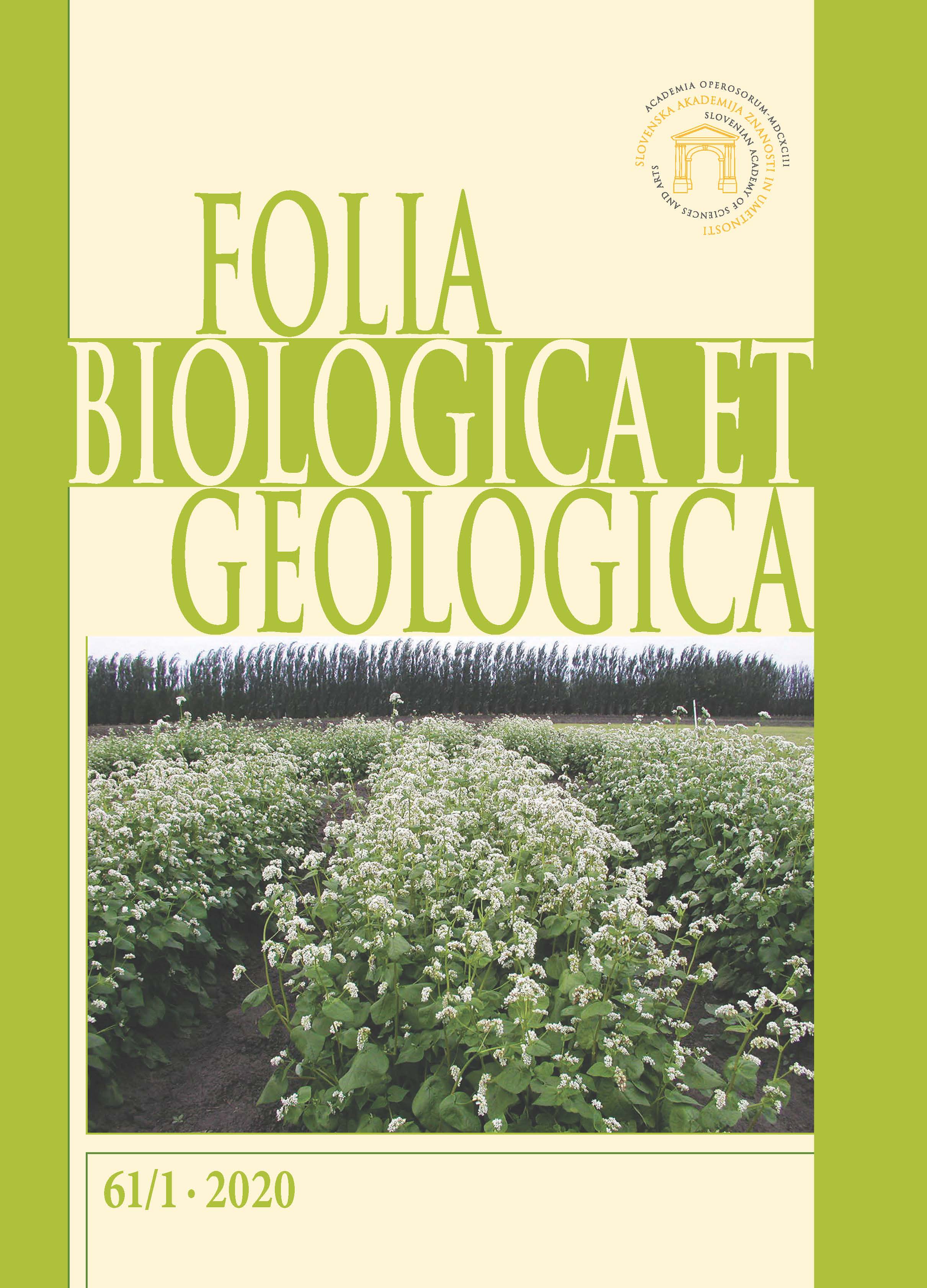Addition of trace elements to Fagopyrum esculentum and F. tataricum / Dodajanje elementov v sledovih navadni in tatarski ajdi (Fagopyrum esculentum in F. tataricum)
DOI:
https://doi.org/10.3986/fbg0069Abstract
Plants need at least 14 elements for normal functioning. Selenium (Se) is on the list of beneficial elements for plants, since it has many positive effects in a propriate concentrations. Iodine (I) is not yet classified on that list since there are not enough studies about the effect of I on plants. Selenium in plants may cause a delay of senescence and promote the growth of the ageing seedlings. Selenium also exhibits protective role in UV treated plants, plants, exposed to water shortage, and in plants, exposed to high or low temperature. High concentration of Se was reported to cause physiological disturbances in plants due to Se binding to cysteine and methionine molecules instead of S, and the inclusion of selenocysteine and selenomethionine in proteins. I might have a positive effect on plants, including its protective role in antioxidant activities in plants, exposed to different stress conditions. Both elements are in deficit in human nutrition in many countries worldwide. I and Se are needed for the optimal function of thyroid gland, thus simultaneous biofortification of crops is feasible for areas deficient in both elements. Selenium and I interfere with each other in pea, common buckwheat plants and in kohlrabi. Sulphur (S) and Se have similar chemical properties, and the assimilation of Se and S follows the S metabolic pathway. S induced the accumulation of Se in Tartary buckwheat in field experiment. Silicon (Si) enhances plant strength, ameliorates the negative effects of salinity, drought, and high or low temperatures, ameliorates metal toxicity, and increases plant resistance to different pathogens and herbivores.
Key words: buckwheat, Fagopyrum, selenium, iodine, sulphur, silicon
Izvleček
Rastline potrebujejo vsaj 14 elementov za normalno rast. Selen (Se) je na seznamu koristnih elementov za rastline, saj ima v ustreznih koncentracijah veliko pozitivnih učinkov na rastline. Jod (I) na ta seznam še ni uvrščen, saj ni dovolj raziskav o vplivu I na rastline. Selen pri rastlinah lahko zakasni proces staranja in pospeši rast sadik. Selen kaže tudi zaščitno vlogo pri rastlinah, izpostavljenih UV žarkom, rastlinah, ki so izpostavljene pomanjkanju vode, in rastlinah, ki so izpostavljene visokim ali nizkim temperaturam. Raziskovalci poročajo, da visoke koncentracije Se povzročajo fiziološke motnje v rastlinah zaradi vezave Se na molekule cisteina in metionina na mesto žvepla in vključitve selenocisteina in selenomethionina v beljakovine. Jod pozitivno vpliva na rastline, vključno s povečanjen njihove antioksidativne aktivnosti pri rastlinah, ki so izpostavljene različnim stresnim razmeram. V mnogih državah po svetu oba elementa primanjkujeta v prehrani ljudi. Jod in Se potrebujemo za optimalno delovanje ščitnice, zato je sočasna biofortifikacija poljščin smiselna na območjih s pomanjkanjem obeh elementov. Dodatek Se in I vplivata na akumulacijo drug drugega pri grahu, navadni ajdi in pri kolerabici. Žveplo (S) in Se imata podobne kemijske lastnosti, asimilacija Se in S pa sledi metabolni poti S. Žveplo je v poljskem poskusu, kjer smo rastlinam foliarno dodajali hkrati oba elementa, povzročilo povečano kopičenje Se v tatarski ajdi. Silicij (Si) povečuje trdnost rastlin, blaži negativne učinke slanosti, suše in visokih ali nizkih temperatur, blaži strupenost kovin in povečuje odpornost rastlin na patogene in rastlinojede.
Ključne besede: ajda, Fagopyrum, selen, jod, žveplo, silicij
Downloads
Published
Issue
Section
License
This work is licensed under a Creative Commons Attribution-ShareAlike 4.0 International (CC BY-SA 4.0).




